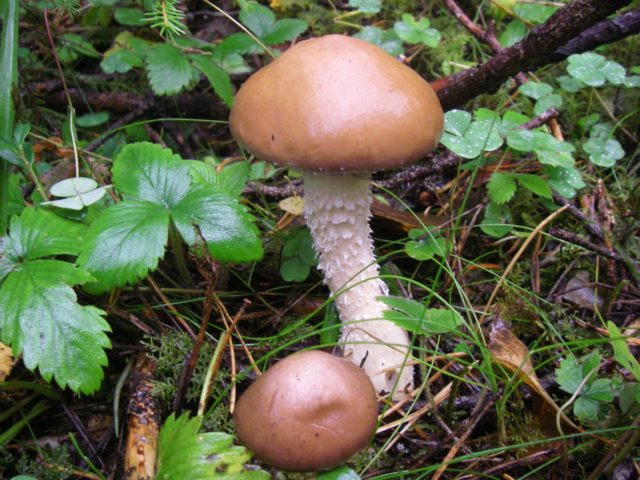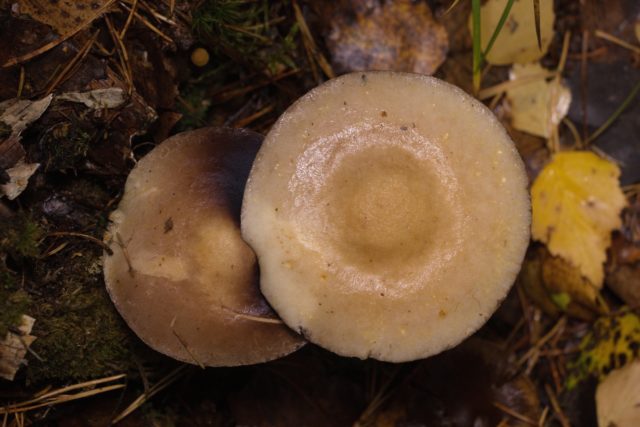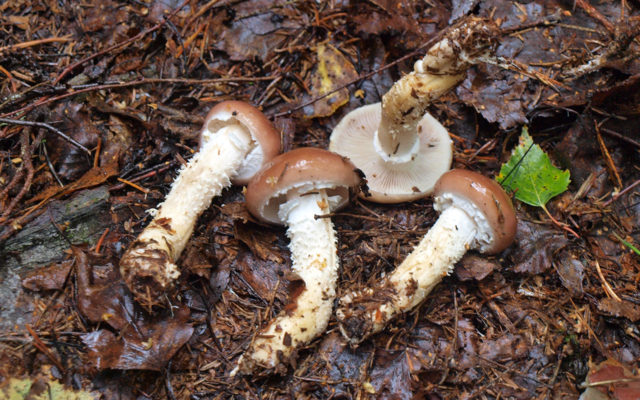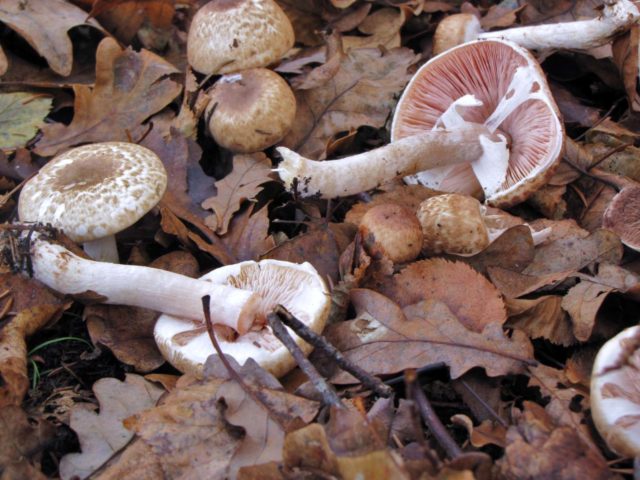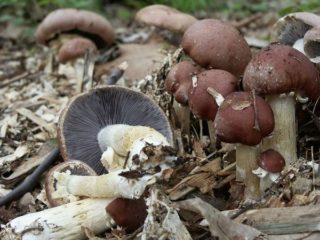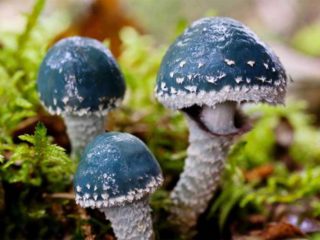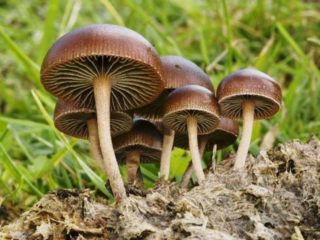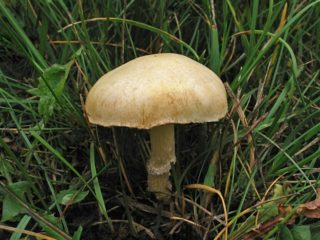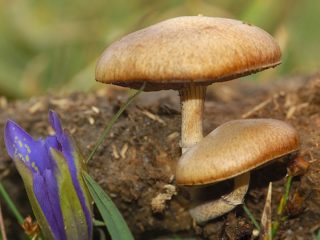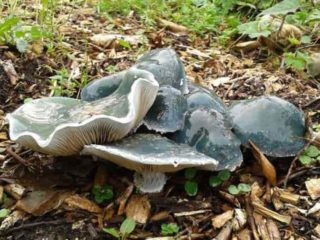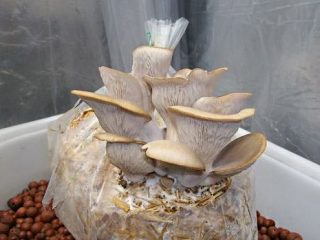Content
Stropharia Gornemann or Hornemann is a representative of the Stropharia family, which is characterized by the presence of a large membranous ring on the stem. The official name is Stropharia Hornemannii. You can rarely meet in the forest, it grows in small groups of 2-3 specimens.
What does Gornemann's strophary look like?
Stropharia Gornemann belongs to the category of lamellar mushrooms. Some mushrooms grow large. A characteristic difference is a specific smell reminiscent of a radish with the addition of mushroom notes.
Description of the hat
The upper part of the mushroom initially has the shape of a hemisphere, but as it matures, it flattens and acquires a characteristic smoothness. The diameter of the cap can reach from 5 to 10 cm. At the same time, its edges are wavy, slightly tucked up. When touching the surface, stickiness is felt.
In young specimens, the upper part has a reddish-brown color with a tint of purple, but in the process of growth, the tone changes to light gray. Also, at the beginning of growth, the back of the cap is covered with a filmy white blanket, which subsequently collapses.
On the underside, wide, frequent plates are formed, which grow with a tooth to the pedicle. Initially, they have a purple hue, and then darken significantly and acquire a gray-black tone.
Leg description
The lower part of the Hornemann strophary has a cylindrical curved shape that tapers slightly at the base. Above, the leg is smooth, creamy yellow. At the bottom there are characteristic white flakes, which are inherent in this species. Its diameter is 1-3 cm. When cut, the pulp is dense, white.
Is the mushroom edible or not
Stropharia Gornemann belongs to the category of conditionally edible mushrooms, since it does not contain toxins and is not hallucinogenic. Young specimens can be used for food, which do not yet have an unpleasant odor and characteristic bitterness.
You need to eat fresh after preliminary steaming for 20-25 minutes.
Where and how Hornemann's stropharia grows
The active growth period lasts from August to mid-October. At this time, Gornemann's stropharia can be found in mixed forests and conifers. She prefers to grow on stumps and rotting trunks.
In Russia, this species can be found in the European part and the Primorsky Territory.
Doubles and their differences
According to its external features, Gornemann's stropharia resembles the forest mushroom. The main difference between the latter is the brown scales on the cap. Also, when broken, the flesh turns pink. This species is edible and has a pleasant mushroom smell regardless of the stage of ripening.
Conclusion
Stropharia Gornemann is not of particular interest to mushroom pickers, despite its conditional edibility. This is due to the presence of a specific odor in adult specimens.Also, the nutritional value is highly questionable, so many try to ignore the mushroom during harvest, preferring the more valuable species that can be found at the end of the season.
